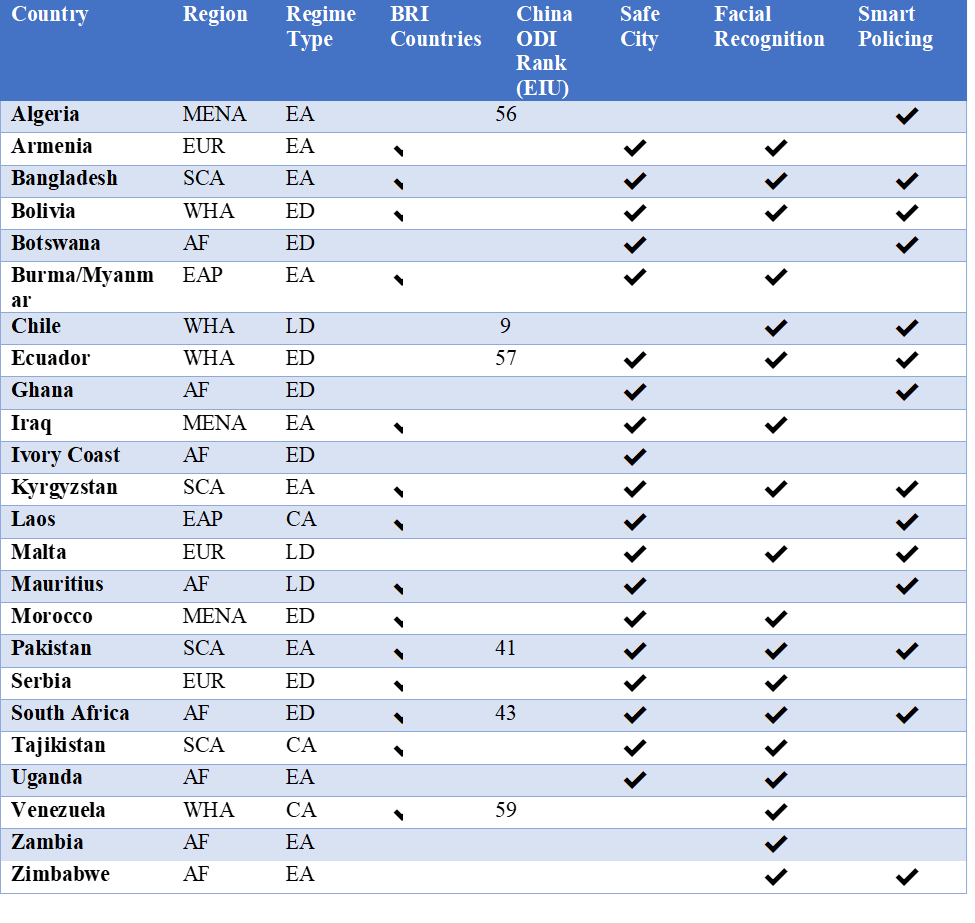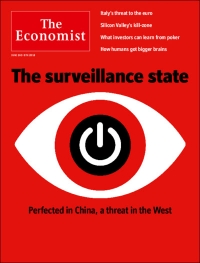 Is China pursuing a grand strategy to systematically proliferate digital authoritarian tools?
Is China pursuing a grand strategy to systematically proliferate digital authoritarian tools?
China’s efforts vary by country, local context, and its own interests, argues Steven Feldstein, Chair of Public Affairs at Boise State University, and a nonresident fellow at the Carnegie Endowment’s Democracy, Conflict, and Governance program:
As Cornell scholar Jessica Weiss observes, “The diffusion of digital authoritarianism is not the same thing as an intentional effort to remake other governments in China’s image. Although these systems can help governments monitor and control their people, how exactly they are used depends on local politics.” This remains a hotly debated issue in the policy and research communities. Experts such as Elizabeth Economy push back and assert that China is seeking to export a “variant of authoritarian capitalism.”
Using data collected in a recent Carnegie report, Feldstein found that in 24 countries worldwide, Chinese firms appear to be the primary suppliers of AI surveillance technology (see Appendix above).
 It would be an oversimplification to see the rise of facial recognition technology as the consequence of a Chinese strategy to export its surveillance apparatus, argues Carly Kind, the Director of the Ada Lovelace Institute @carlykind. As countries consider whether to draft new laws to tame this rapidly advancing technology, they are likely to encounter at least three major policy challenges, she writes for Chatham House, the UK-based foreign policy think-tank:
It would be an oversimplification to see the rise of facial recognition technology as the consequence of a Chinese strategy to export its surveillance apparatus, argues Carly Kind, the Director of the Ada Lovelace Institute @carlykind. As countries consider whether to draft new laws to tame this rapidly advancing technology, they are likely to encounter at least three major policy challenges, she writes for Chatham House, the UK-based foreign policy think-tank:
- The first is trying to putting the genie back in the bottle. In a short period of time facial recognition has become common place in consumer devices, shifting the so-called Overton window – the range of policies that the public finds acceptable – by normalizing technologies once perceived as potentially dystopian. This is a question of politics, rather than law: negotiating countervailing interests within state institutions and balancing public expectations against the public interest….
- Secondly, fit-for-purpose regulation will need to unpick the conflated technical and legal concepts bundled together under the ‘facial recognition’ umbrella, recognizing which are specific to facial recognition or other biometric technologies and which are related to artificial intelligence capabilities more broadly.
- Finally, domestic regulation may be effective in restricting the buying and deployment of facial recognition systems by the public sector, and preventing private companies from using facial recognition on physical premises, but its effectiveness is bound to be hampered by the global trade in these technologies.
But China is not the only country engaged in spreading the technologies and techniques of digital authoritarianism, he writes for War On The Rocks. RTWT
 Such as Iran…….
Such as Iran…….
The Islamic Republic has invested significant resources and accumulated vast experience in the conduct of digital influence efforts, according to a new Atlantic Council report, “Iranian Digital Influence Efforts: Guerrilla Broadcasting for the Twenty-First Century,” by Emerson T. Brooking and Suzanne Kianpour. Three conclusions can be drawn about the nature of Iran’s modern propaganda apparatus, the report notes:
- Iran’s digital influence efforts involve centralized goals and disparate agents. Ayatollah Khamenei himself has emphasized the importance of digital influence operations to Iran’s survival. Accordingly, the government has invested heavily in such capabilities. Yet, different elements of Iran’s digital propaganda apparatus evidence the involvement of different agencies, from the mass dissemination of content from the Islamic Republic of Iran Broadcasting (IRIB – the state propaganda agency) to the targeting of individual Western journalists (likely conducted by the Islamic Revolutionary Guard Corps (IRGC). It is not clear how, or if, these agencies coordinate their operations.
- These goals are closely tied to Iran’s geopolitical interests. Nearly all content spread by Iran’s digital influence efforts relates directly to its worldview or specific foreign policy objectives. Consequently, it is easier to identify the operations of Iran than those of other actors like Russia, whose content is more likely to be politically agnostic. ….
- Iran may attempt direct electoral interference in 2020 and beyond. To date, there is little evidence that Iran has sought to affect the outcome of a US election. This does not, however, preclude future such campaigns. Iran is certainly aware of Russia’s successful interference in the 2016 US election and how a small investiture of resources had such an outsize impact on US political discourse…..
Additionally, five steps can be taken to meet this threat, the report adds…RTWT
The rapid proliferation of censorship and surveillance technology around the world is threatening human rights, the NED’s Center for International Media Assistance adds (see below). Authored by Open Technology Fund Information Controls Fellow Valentin Weber, a recent research report tracks the export of Chinese and Russian censorship and surveillance technology, providing fresh insight into the importance of telecommunications infrastructure to modern authoritarianism.







